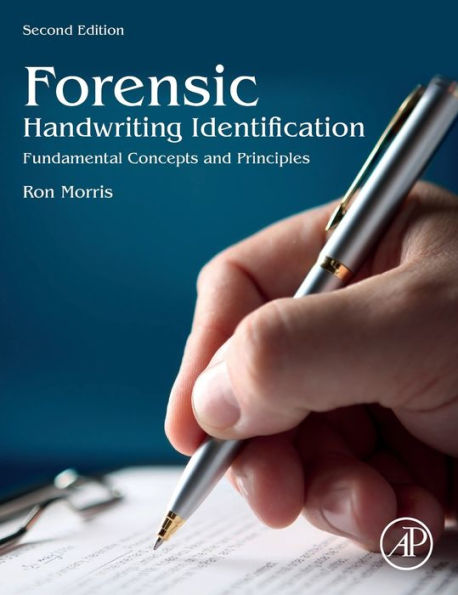Forensic Handwriting Identification: Fundamental Concepts and Principles
Forensic Handwriting Identification: Fundamental Concepts and Principles teaches the law enforcement and legal communities the major principles involved in handwriting and hand-printing analysis as applied to many types of investigations, including fraud, homicide, suicide, drug trafficking/clandestine labs, sexual offenses, threats and extortion, blackmail, arson, bombings, and theft. Lawyers and investigators will learn how to interpret an examiner’s report, the significance of various handwriting opinions and the influencing factors which must be considered.
"1117931649"
Forensic Handwriting Identification: Fundamental Concepts and Principles
Forensic Handwriting Identification: Fundamental Concepts and Principles teaches the law enforcement and legal communities the major principles involved in handwriting and hand-printing analysis as applied to many types of investigations, including fraud, homicide, suicide, drug trafficking/clandestine labs, sexual offenses, threats and extortion, blackmail, arson, bombings, and theft. Lawyers and investigators will learn how to interpret an examiner’s report, the significance of various handwriting opinions and the influencing factors which must be considered.
79.95
In Stock
5
1

Forensic Handwriting Identification: Fundamental Concepts and Principles
320
Forensic Handwriting Identification: Fundamental Concepts and Principles
320Hardcover(2nd ed.)
$79.95
79.95
In Stock

Product Details
| ISBN-13: | 9780124096028 |
|---|---|
| Publisher: | Elsevier Science |
| Publication date: | 11/13/2020 |
| Edition description: | 2nd ed. |
| Pages: | 320 |
| Product dimensions: | 7.50(w) x 9.25(h) x (d) |
About the Author
What People are Saying About This
From the B&N Reads Blog
